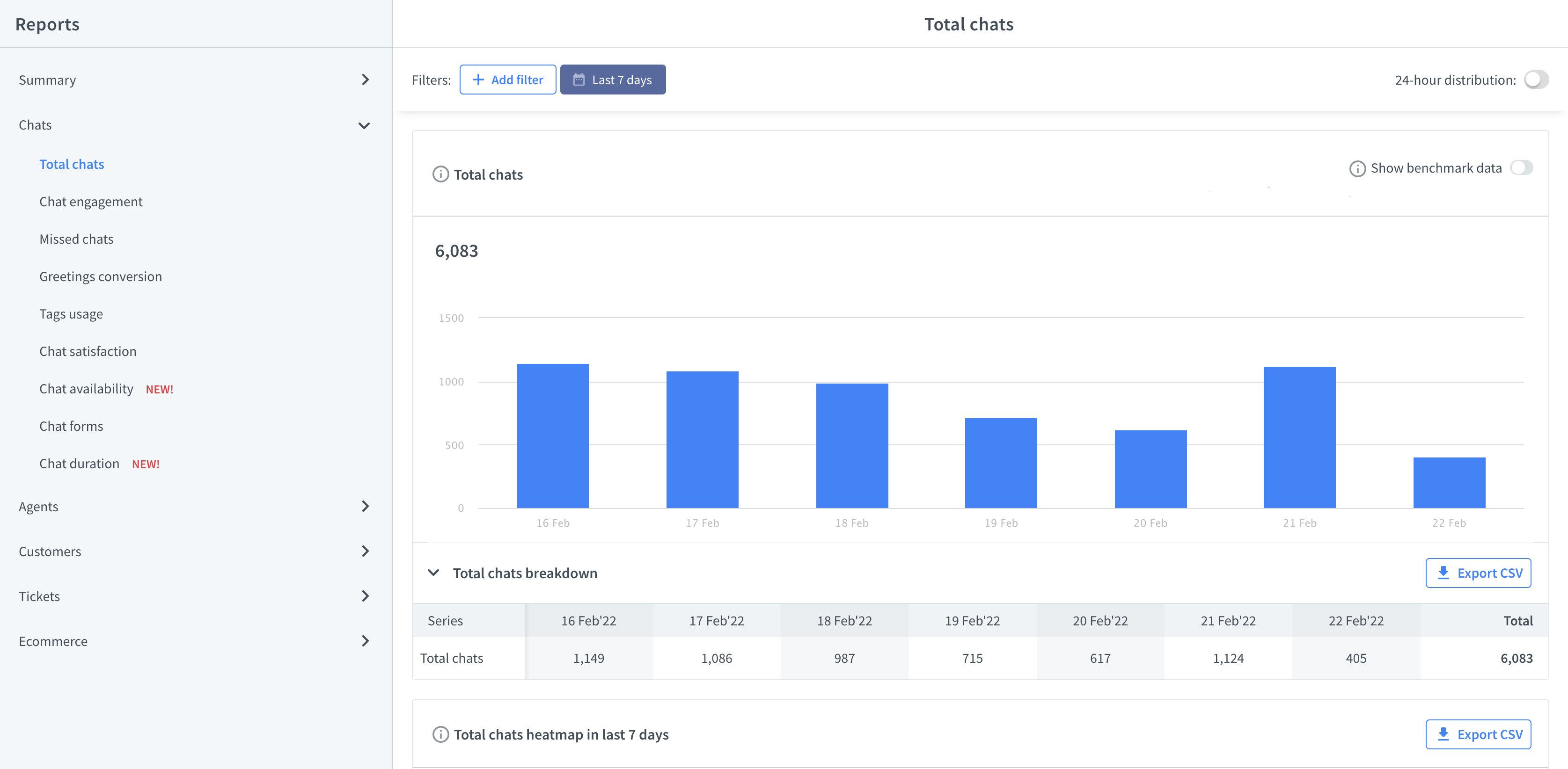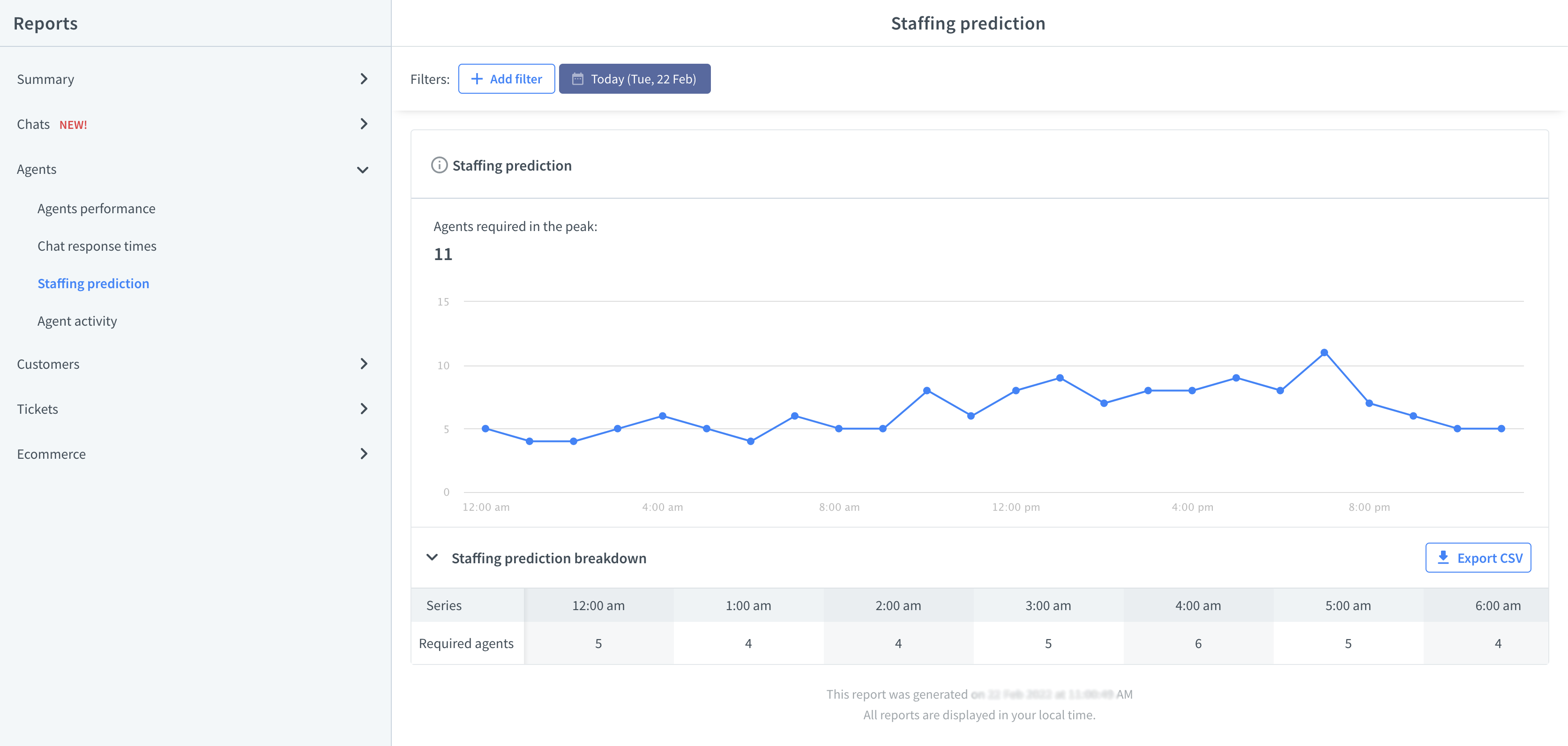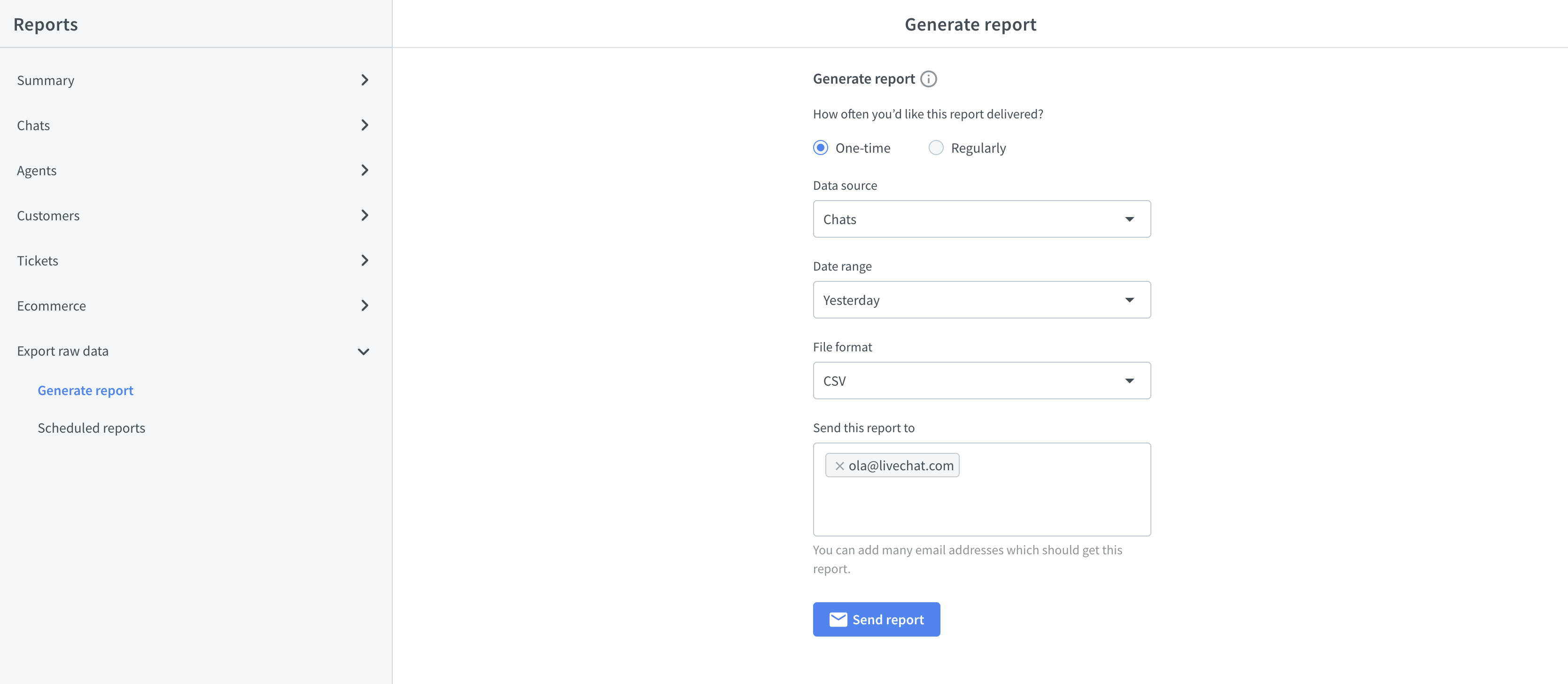Preparing your team for a transition to live chat support is almost as important as correctly setting up your account. Because the success of LiveChat as a support tool leans heavily on how your agents use it. I gathered some guidelines that might help you create an ideal workflow for using LiveChat in your team. Enjoy!
Predict how many agents you need
You just started your LiveChat trial and wondering how many agents you need online? Sadly, I don’t have a ready answer as it depends on many factors. But with the guidelines below, you can make an estimate that should be sufficient for the very first days. You can also learn how to use reporting to adjust the number of agents online to everchanging needs of your customers.
First days with LiveChat
The easiest way of predicting chat volume when you haven’t had any chats yet is using data from other channels. For example phone or email support. Looking at historical data of support cases, you can estimate how many chats might come your way. For example, if you had 30 calls and emails about a certain matter in a day, you might expect to have a few more chats about the same subject. On the other hand, handling chats often takes less time than providing support on the phone.
A rule of thumb is that trained agents can comfortably take about 90 chats in a day, 6 at a time. But that applies only to support teams where questions are repetitive and not very complicated. If you have a complex product and every chat takes an hour then your agents will be able to handle way fewer cases in a day.
Questions worth considering when you’re calculating how many agents you need:
- How heavy is the traffic on your website? Does it change throughgout the week?
- Is the chat widget added to all your pages?
- Do you use automatic greetings or manual invites? Maybe both?
- Do you have a pre-chat survey?
- How many chats will an agent take at the same time?
- How many hours in the day will chat be available on your website?
- How long would you like the average chat to be?
Calculate the number of agents with reports
After a few days, you might notice at what time incoming chats peak and what days are busiest. But instead of writing it all down manually, you can look into the total chats report that shows when and how many chats are coming your way. Divide the number of chats by the chat limit set for your agents to get the number of agents that you need at a particular time of the day.

Easier reporting with Business plan features
If you are on the Business plan, you can take a look at the Staffing prediction report. It takes data from the previous 4 weeks (so if you want to get a prediction for a Monday it will take data from last four Mondays) and shows you how many agents you will need.

You can also export reports to a CSV file to create your own customized reports. If you want to automatize your work with custom data, you can also use our API to pull information from the database.

Establish an effective workflow
If your the team hasn’t used LiveChat before, it might be quite a change. No reason to worry though, there are a few simple things you can do to make this transition easier.
Divide tasks in your team
Dedicated support team:
Our customers say that the most effective way is to separate tasks, so Agent A takes phone calls, Agent B answers tickets/emails, Agent C takes chats. They can switch during the day, so the work is not too monotonous.
No dedicated support team
To decide how to divide tasks and create a schedule, you should talk to your team and see what works best. There are a few ways to plan your team’s timetable:
- Agents are logged in all day and go back and forth between not accepting and accepting chats statuses.
- There is a dedicated LiveChat support person who handles chats and other computer-related tasks.
- Agents have short shifts, so Agent A is online 8am-10am, Agent B 10am-12pm and so on.
- Agents work in 8h shifts, so every day a different agent is online.
Decide if you need shift work
If you provided support before, you might have noticed that customers send emails after your standard work hours. If you get a lot of tickets from the ticket form, it might mean that you should extend your online work hours. You don’t need to introduce 24/7 support right away, but you might want to get started with an evening or weekend shift.
Create procedures
Deciding what procedures you need depends on your business. But there are a few general things worth figuring out and writing down:
- Your team’s schedule and task division.
- How and when use tags and canned responses.
- What to do when an agent gets a negative rating. Does the agent need to tag the chat or tell their supervisor?
- How you share the responsibility for tickets and support emails.
- How you share information with each other about customers and cases. Do you have a dedicated CRM and helpdesk software that is integrated with LiveChat, or maybe you use spreadsheets?
- In what situations agents can use transfers.
- How you track your goals and quality assurance. Do you use LiveChat tools?
- How you deal with spam and angry customers.
Do quality control
When taking care of quality assurance, you can either choose quantitative methods (so numbers: like average response time) or qualitative methods (so reading past chats and tickets to see what could have been done better). Or mix both of them.
Quantitative methods
For chats:
If you establish a certain level of quality in your procedures, it is easy to track it later on. Here’s what reports can help you with quality control:
- Chat satisfaction—see if your customers were happy with the support they got.
- Response time—check first response and average response time reports to see if your customers are not waiting too long for a reply.
- Chat availability—see how many hours chat was available for your customers.
- Agent activity—see when particular agents where online, and what was their status.
- Queued visitors—check average waiting time to see if it isn’t too long.
You can also use chat quality to look for trends, for example, if you have a chat satisfaction at 90 percent for weeks and suddenly there is a drop, maybe there is something that is happening to your service, product that needs to be changed and there is nothing your support agents can do about it.
For tickets:
- Ticket satisfaction—see if customers were happy with how your agents handled the case.
- First response time—check if the first response time is within your agreed limits.
- Resolution time—check if resolution time is within your agreed limits.
Qualitative methods
Go through old chats and tickets to check if the way agents are talking to your customers aligns with your standards. You can do random checks or have a system established. For example, agents can tag chats that went particularly badly and that were handled brilliantly and are worth sharing with others.
You can also establish a buddy system so agents check 10 cases handled by another agent every week and give them both praise for fantastic customer service and advice on what could have been done better.
Train your agents
Training your agents is important if you want to keep a certain standard of quality when providing chat support. There are a few methods you can use to help agents learn:
- Training materials, procedures and written tests—perfect for product knowledge and learning about internal processes. Once the agent gets through their reading assignment they can take a test to see how much they remember.
- Shadowing—let the new agent follow a more experienced teammate.
- Supervision—once an agent feels comfortable to handle chats on their own, they can have a teammate that sits closely and provide help if necessary.
- Buddies—great for constant improvement; let two teammates check each other’s chats to see what can be improved.
There are three major aspects of training chat agents: product knowledge, conversation style and LiveChat app familiarity.
Teach product knowledge
To get new agents onboard, make sure you have an internal knowledge base as well as written procedures they can use to learn about your product or service. We recommend using KnowledgeBase that can let you create internal help center for free. Added bonus: your agents can use it without leaving the LiveChat app.
Show your conversation style
If you own a brand with a very specific tone of voice that your customer love, don’t be afraid to show it. Some people might not like talking like that on chat though. That’s why it’s never a good idea for your agents to assume what the customer wants. It’s best for agents to tune in to the customer’s conversation style.
Let them get familiar with LiveChat
Before agents start taking real chat, you might want to show them the app. Let them click through the sections, show the most important tools. Show how to handle tickets and so on. It will be way easier for them to handle chats if they know where things are.
Make your agents’ life easier
A few more things you can do to lighten your agent’s workload:
- To make common answers easier to deliver, create canned responses.
- Share knowledge about current cases and news about your product or business using internal tools like Slack.
- Write down the most important rules and procedures in a cheat sheet.
- Use integrations and apps to automatize tasks that require using external services like CRM, helpdesk, analytics, and email marketing tools. Head to Marketplace to quickly add them to your LiveChat.
- Use chatbots, which can handle repetitive questions so your agents can deal with cases that really need their attention.

